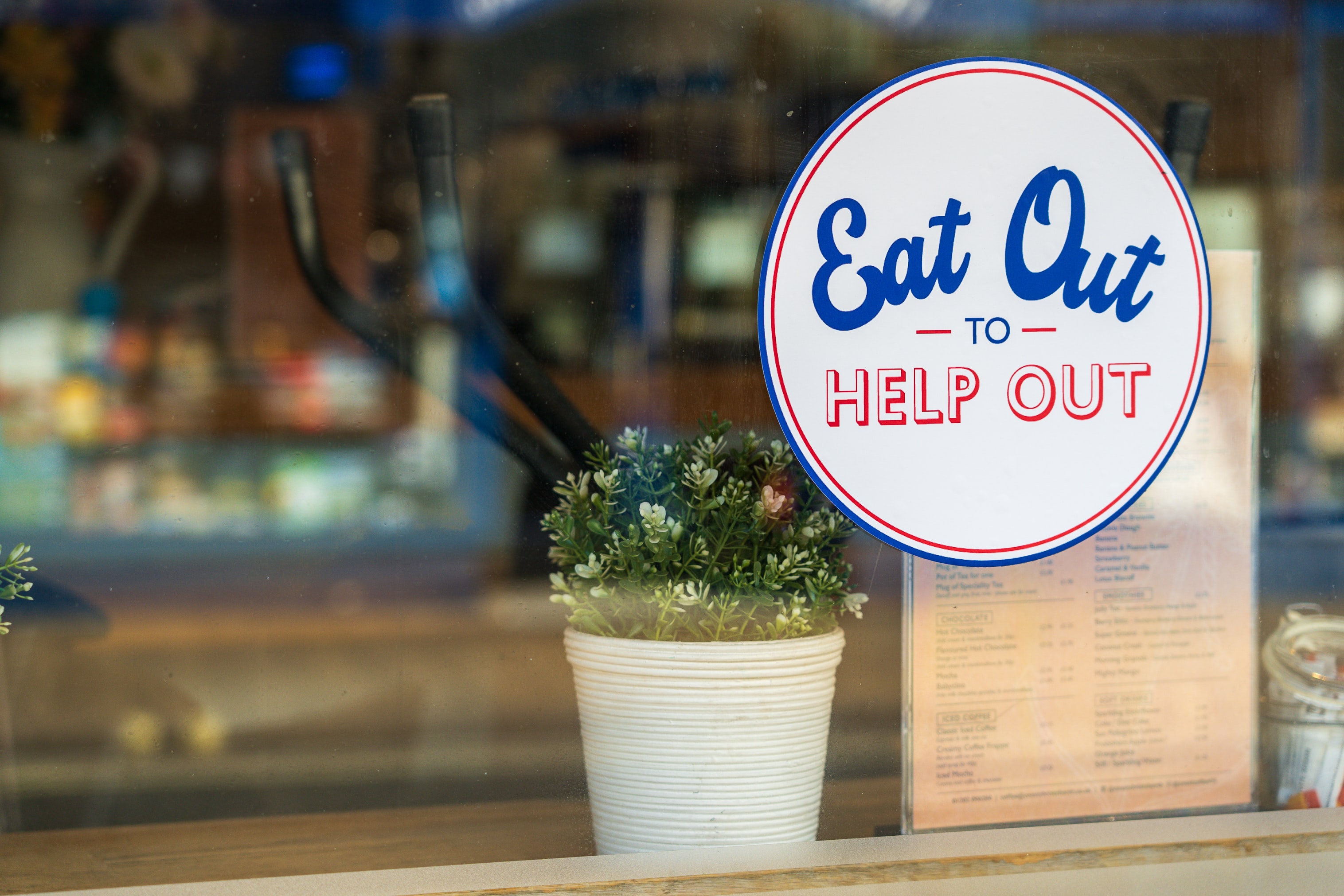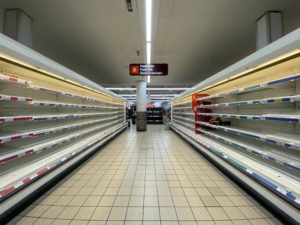
Eat Out to Help Out: a 2020 UK government scheme to stimulate economic recovery from COVID-19 by offering incentives to eat out in restaurants, cafes or pubs (Photo by Nick Fewings on Unsplash)
As a person living in England, the COVID-19 lockdowns of 2020-21 meant a lot of comfort eating and not a lot of movement – two years later and I am still working to reverse the effects this has had on my health and wellbeing. However, it is clear from recent scientific research, as well as print and social media, that I was not the only one – the restrictions associated with COVID-19 affected the eating behaviours of people across the world. The question is: how long are these effects on our eating habits likely to last and what are the long-term impacts of COVID-19 likely to be on our future eating behaviours?

Standard lockdown snack? (Photo by Evangelina Silina on Unsplash)
The restrictions and lockdowns associated with COVID-19 affected people in different ways. Some were positive: a general increase in cooking from scratch was reported in many countries, and if the thousands of Instagram pictures of banana bread and sourdough are anything to go by, then people certainly found solace in new-found baking skills. In contrast to this, in England people were encouraged to support local businesses through the pandemic by ordering takeaways and participating in the ‘Eat Out to Help Out’ scheme, leading to an increase in the amount of pre-prepared, and often unhealthier, food being consumed. Sadly, it has also been shown that certain groups of people have been disproportionately negatively affected, including those with pre-existing eating disorders, those who already had a high BMI, and those with in difficult socio-economic circumstances, resulting in many people experiencing increases in disordered eating. Clearly the effects of a pandemic are varied and deeply personal.
There have been a number of pandemics throughout human history and COVID-19 certainly isn’t the first large-scale outbreak of disease that has dramatically affected consumption. The ‘Black Death’ (as it is now commonly called) is probably one of the most well-known and better studied of the historical pandemics. This was an outbreak of plague caused by the bacteria Yersinia pestis, that spread rapidly across much of the globe in the mid-14th century AD. The ‘Black Death’ resulted in the death of a significant proportion of the world’s population and is considered by some historians to be a pivotal moment in social and economic history. While there are obviously a number of important differences between the current COVID-19 pandemic and the ‘Black Death’ nearly 700 years ago, historical documents and archaeological evidence indicate that the ‘Black Death’, like COVID-19, also changed patterns of consumption.
Unfortunately, identifying comparable short-term changes in individual people’s diets during the main years of the ‘Black Death’ (1348-50) is extremely difficult. There is evidence, however, that people in the mid-14th century experienced similar problems to us with their food supply chain. In Britain, the country-wide effect of the ‘Black Death’ meant there was a shortage in the labour and skills needed to grow, process and distribute food stuffs. This meant that many people probably experienced a short-term reduction in the variety of products available to them.

Empty supermarket shelves in 2020 in Putney, England due to COVID-19 related supply and demand issues (Photo by John Cameron on Unsplash)
In the medium-term, the reduction in population size due to the ‘Black Death’ resulted in many of the remaining people, particularly the lower peasant classes, experiencing previously unprecedented levels of autonomy, better wages and greater purchasing power. Some of those who survived were able to choose to consume better quality food, such as bread made from better quality flour, which previously had only been available to the upper classes. These fundamental societal shifts, coupled with the reduction in population and labourers were also, at least in part, responsible for a long-term shift in the entire agricultural system in Britain, with many areas switching from labour-intensive arable farming (crops) to less labour-intensive pastoral farming (animals). This in turn changed dietary habits by increasing the availability of meat and dairy products to the general population. Ultimately, the ‘Black Death’ had both temporary small-scale and lasting large-scale effects on consumption patterns.
Looking at past pandemics such as the ‘Black Death’ can help us understand the effects that COVID-19 may have on patterns of consumption. We should, however, always acknowledge that no two pandemics are the same. Context is key to the experience of the people at the time. We have seen that each country’s political and cultural response to COVID-19 has varied, leading to differing social ramifications. COVID-19 has struck during a period of complex global conditions and in Britain, for example, it is hard to disentangle some of the direct effects of the pandemic from other concurrent factors such as Brexit, poor governance and climate change. Similarly, the ‘Black Death’ occurred during a period in Medieval Britain which was characterised by prolonged warfare, climate change, famine and overpopulation, all of which contributed to its effects and consequences.
In the short-term, pandemics can have negative effects on our eating patterns, largely due to the disruption of the status-quo. Studying historical pandemics has shown us that they can also have long-lasting effects on consumption, often for the better. Ultimately, these effects may be personal (many may continue to make use of their newly-found baking skills), or they may even be global. The COVID-19 pandemic has certainly highlighted the fragility of our modern food supply systems, with the effects of the virus leading to a reduction in production and interruptions to distribution. Perhaps we can hope that one long-term effect of this modern pandemic is that it will force steps towards creating greater food security.







